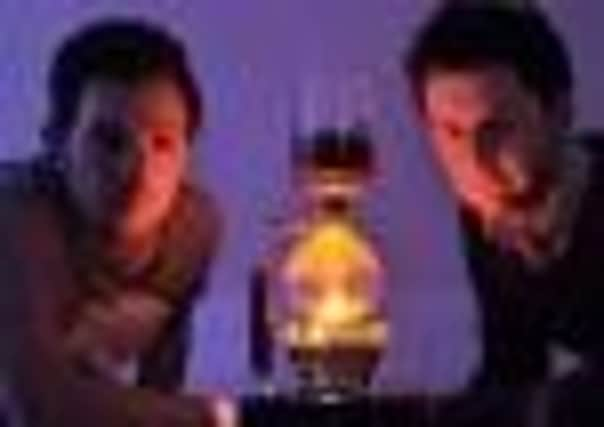New wave of coffee fans brews up a storm in Edinburgh


Hyde and Law are a bit shaky on what the first wave might have been – they say it was the rise of instant coffee while some food writers say it was the introduction of coffee imports to America or even trace it to the 18th century coffee culture of London.
According to Wikipedia, the Third Wave was also the name of a dubious experiment carried out by a high school teacher in California in the 1960s to demonstrate he could convert his students to Nazi ideology.
So far, so confusing.
Advertisement
Hide AdAdvertisement
Hide AdBut when it comes to coffee, the third wave refers to a move toward expertly brewed coffee – and the rise of independent coffee shops specialising in single estate gourmet coffee. David Law says: “It’s about taking coffee seriously and not drowning it in cherry chocolate froth.”
As everyone agrees, the second wave refers to Starbucks, Friends, supersized giant lattes and concoctions such as frappucinos, chai latte and other flavoured, syrup-laden milky coffee-ish grown-up milk shakes.
Founded in the 1970s, it wasn’t until the 1990s that Seattle-based Starbucks conquered the world. But that was almost 20 years ago, and as Tom Hyde says: “There was a reaction to the mass market nature of it. People started to get bored of it.”
Starbucks profits in Europe are down while in Australia the coffee company has had to close stores because of competition from the supercool native coffee scene.
The third wave – which has already taken root in London and New York – also has roots Down Under. In Melbourne, centre of Australian coffee culture, the baristas are like rock stars, whippet-thin with long, tangled beards and an übercool attitude. In Oz this year I was taken to an underground laboratory with tiled walls and uncomfortable bar stools where men with beards stood making the latest thing – whisper it – filter coffee.
For those of us old enough to remember Cona coffee, served at dinner parties and kept rancid with the help of a tealight, it comes as a surprise to see Hyde, Law and their clued-up, wired- up staff getting excited over filter coffee.
But for this next generation filter coffee is highly scientific stuff.
In Brew Lab you won’t find supersized offerings of anything and nor is there an array of different kind of milk. Sugary syrups are banned and the baristas try and encourage people to try their coffees without milk or sugar in order to experience the full flavour of the beans.
Advertisement
Hide AdAdvertisement
Hide AdAs well as using freshly ground beans and single estate coffee, which varies according to what is fresh and in season, the command centre of Brew Lab contains an array of equipment which allows coffee to be made in six different ways.
There are taps, temperature gauges, vials, jars, pressure pipes, giant syringes, scales and things that look like Bunsen burners as well as a giant espresso machine which goes by the name of the Slayer.
The menu board shows the coffee beans available and the various different methods of preparing the black gold.
Today, Irish barista David Bernard is demonstrating the V60 using Kenyan Kiawamururu beans.
As Bernard laboriously dampens the filter, measures the water temperature, heats the cups and grinds the beans, Hyde observes: “There is nothing fast about this kind of coffee but we find our customers have the patience to wait.”
When it appears, the coffee, drunk black in small white cups, is curiously sweet and fruity with a distinct tang of blackberries.
Our second brew is a Costa Rican Herbazu honey process coffee prepared using the Chemex – an elaborate kind of glass siphon lit by a halogen beam. It looks a bit like a coffee percolator except for the Chinese instructions and the shiny gold trim. This second cup of coffee takes even longer to produce.
It could take all day to demonstrate the full range of kit, but there is also the Aeropresse –a kind of massive syringe made in France, the clever dripper, which is a controlled immersion filter method and something called the siphon.
Advertisement
Hide AdAdvertisement
Hide AdHyde says: “The idea was to have a full-on brew bar and to have a permanent offering of brewed coffee. It might take five or ten minutes to prepare, but it is not going to take half an hour.”
It’s all getting a bit Willy Wonka, and I start rolling my eyes a bit. But I get into trouble when I call them coffee geeks. “People never call chefs geeks and they never call wine experts geeks,” says Bernard. He looks really hurt.
And the passion and drive at the heart of this business are paying off. As lunchtime rolls on, a stream of students surges towards the doors and orders latte, cappucino and flat whites. Businessmen roll up and feast on giant pastrami and pate sandwiches. And a musician sits with his young son as he demolishes a large slice of Victoria sponge.
I think these two young entrepreneurs have got the balance right. In the coolest coffee bars in East London, or in Melbourne for that matter, you would never find a slice of cake.
Tom Hyde says: “The coffee scene can be a little bit unfriendly and we didn’t want to be like that.”